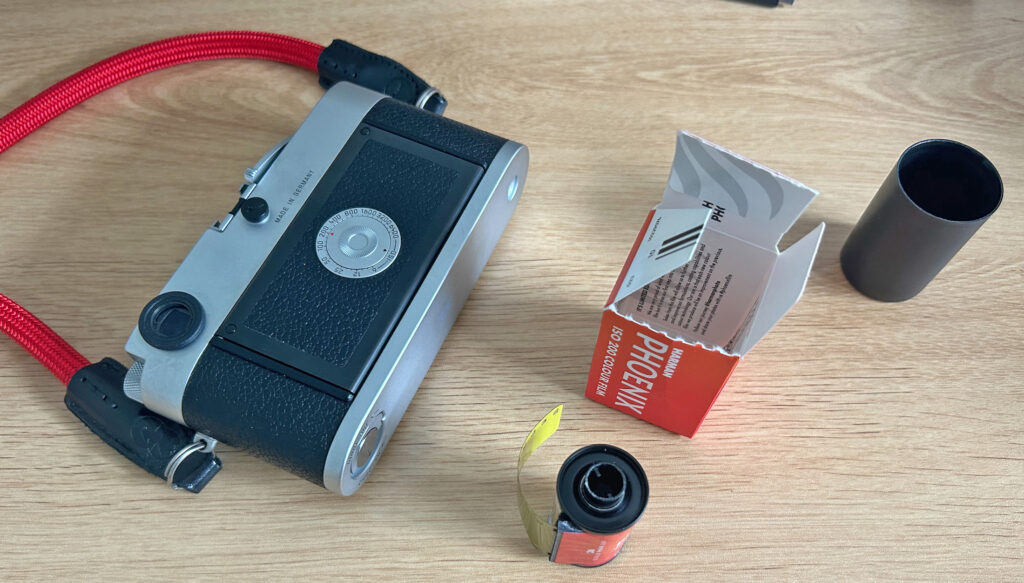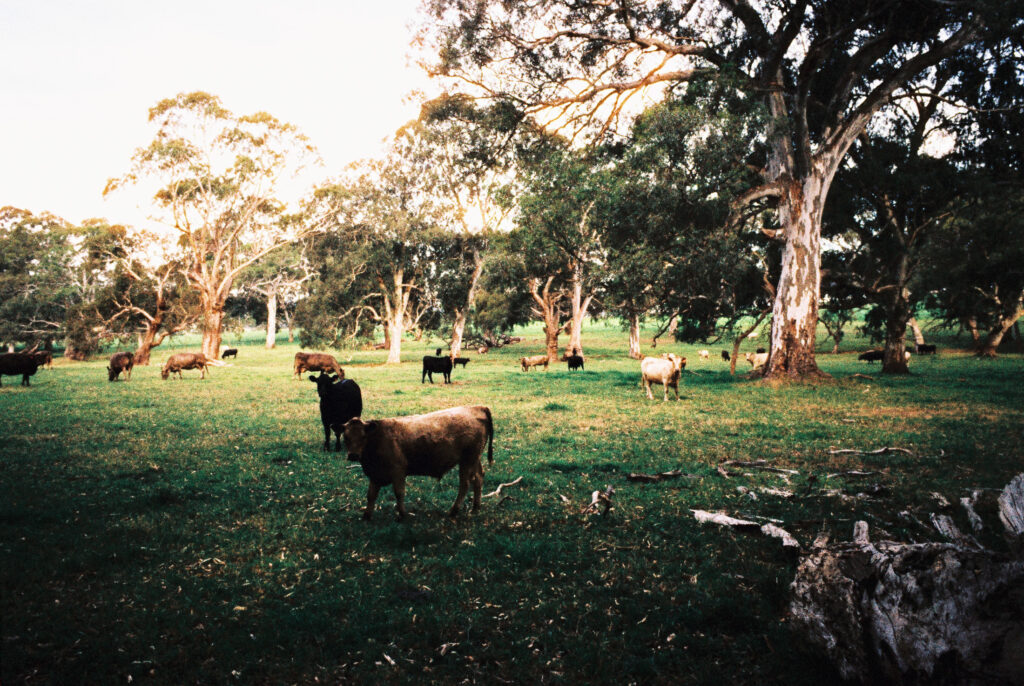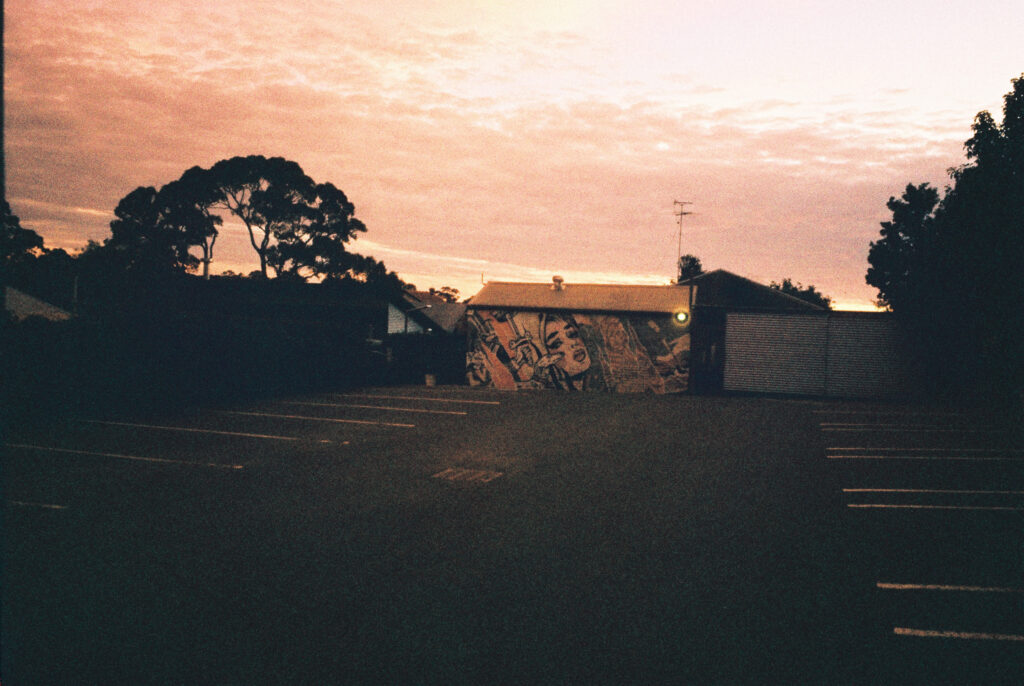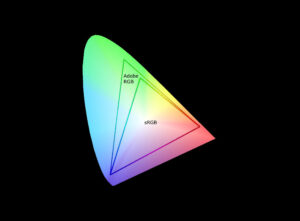This is not the Ilford, ahem, Harman colour film I’m looking for. I’ve been trying out Harman’s Phoenix 200 film and it’s not what I was hoping for. It doesn’t seem to have a unique quality, rather it seems to be trying too hard to have too many of them and the result is a bit of a mess . I’m on the lookout for something that matches the distinct qualities of films I love, like the flawless nature of Kodak Portra, the rich saturation of Fuji Velvia, or the crisp black and white detail of Ilford Pan F. Each of these films has its own unique character that I’ve come to appreciate deeply. When I shoot with them, I know exactly what to expect in different conditions and how to use their unique characteristics to my advantage.
The World’s Newest Colour Film (in 2024)
Like the mystical Phoenix, this new colour film represents hope, rebirth, and transformation. It signals the start of a new legacy and the beginning of an exciting new chapter for one of the world’s largest manufacturers of photographic film.

As soon as I got my hands on a roll, I loaded up my Leica MA and took it out over a few days in the south Australian summer with a 28mm lens.

To Harman’s credit, it is the first ever colour film made entirely from emulsion to cassette at the Harman factory. the text on the inside of the packaging gets me excited and it is a nice touch. Sadly, I think the packaging design is the best thing about Phoenix 200. There certainly isn’t much I like about the performance of the film itself.

Harman Phoenix 200 is very effect heavy
The issue with Phoenix 200 is that it seems to lack a clear identity. It’s trying to do too much, packing in a range of characteristics, but it doesn’t quite hit the mark for me. It’s unpredictable, and that unpredictability hampers my ability to work with it effectively. I prefer film that lets me anticipate the end result, and Phoenix 200 just doesn’t allow for that.

I’m genuinely excited to see another player entering the colour film market. It’s refreshing to know that amidst the various C-41 and ECN-2 films out there, and the likelihood that some European films are just old stock or rebranded Kodak, Harman is daring to create their own C-41 colour film.

It’s quite commendable. Even though they label it as “experimental” right on the packaging, it’s a significant step forward, and I’m eager to see where this leads.
Harman or Ilford Colour Film?
You might be wondering, “Who is Harman?” That’s a reasonable question. While the name Harman might not ring a bell, their flagship product, Ilford film, is certainly well-known among photographers. Harman is the company behind the production and distribution of Ilford’s renowned black & white films, darkroom papers, and chemicals. It’s a little-known fact that Ilford did have its own line of colour film many years ago. However, over the past few decades, the Ilford brand has become synonymous with black and white photography.
It’s important to acknowledge that Phoenix 200 isn’t merely a side project; nor is it an existing film repurposed under a new label. This is a brand-new product from a company with one of the longest and most esteemed legacies in the film industry. Due to legal constraints, Harman can’t market colour film under the Ilford moniker. Nonetheless, this film is crafted by the same seasoned hands, in the same historic facilities. The team at Harman has a rich heritage in film production and is deeply committed to ensuring the art of film photography thrives for many years to come.
Harman Phoenix 200 Film Characteristics and Performance
The Harman Phoenix is a colour negative film with an ISO rating of 200, intended for use with the standard C-41 development process. Ideally, you’d use it outside on a nice sunny day or with a flash if you took it indoors. At its introduction, it’s only offered in 35mm format, though there’s talk of Harman possibly releasing it in 120mm as well.
The film is characterised by its high contrast, intense saturation, and pronounced grain that seems excessive for its ISO 200 speed. To me, it feels like the visual equivalent of an over-edited photo where the effects have been applied with a heavy hand – too much contrast, saturation dialed up to an extreme, and grain that wouldn’t be out of place in an ISO 1600 film. The resulting images are so heavily processed that they leave little room for any further editing.

Too much noise, saturation and contrast. And there is little in dynamic range to be able to recover any of it. All my samples were from high res TIFF scans.
There is a total lack of detail in the shadows as shown in these samples.



Again, trying to recover the detail in these shadows is impossible. Unlike for example Kodak Portra which is much more versatile and forgiving with plenty of detail in the shadows.
In addition to these characteristics, Harman Phoenix 200 exhibits a halation effect similar to what’s seen with Cinestill color films. However, this doesn’t necessarily mean it’s derived from cinematic film stock; rather, it suggests a weak or absent anti-halation layer. It’s as if Harman has added yet another effect to an already crowded mix.
We know from Cinestill that their unique look comes from removing the anti-halation layer to facilitate C-41 processing, a technique that can actually be applied to many types of film. But why Phoenix 200 permits such noticeable halation is unclear, though it will undoubtedly be apparent to anyone who tries out this film.

Harman Phoenix can be shot at 100 or 400 ISO, though Harman advises that getting exposure just right will yield the most consistent results, but I definitely don’t think there is anything consistent about it.
The pronounced grain of Phoenix 200 imparts a distinctly rough texture that photographers will either find appealing or off-putting. This characteristic means the film doesn’t produce particularly sharp images, which suggests that those seeking high levels of fine detail might prefer to use medium format film instead. As shown by these Lightroom screen recordings, the latitude for editing Phoenix 200 is minimal.

Despite double checking the exposure, I just found it has a grainy, post apopoyptic look to it. Maybe that post processing style is in fashion now, but I’m not sold on it.
Actually, Phoenix 200 is quite demanding in terms of exposure, offering limited room for error. For instance, when shooting a roll at ISO 400 without adjusting the development time, the results showed a significant loss in exposure and detail, more than one would typically expect compared to shooting a roll of Gold 200 at the same ISO setting. Overexposure also tends to exacerbate the grain issue, making the already prominent grain even more conspicuous. Plus, you get quite a shift to red hues when the exposure is wrong. Or was this just it over emphasising the evening light? Odd in my view.


The very existence of Phoenix 200 is a boon for the film photography community. The colour film market has been too restrictive for too long, and there’s been a palpable need for fresh players. Harman is stepping up to meet this demand.
For long exposures at night, I’ll stick to Porta or ProImage 100.


Converting to black and white?
For fun, I gave it a try. To be honest the results look like over-processed black and white film, and that lack of dynamic range with Harman’s Phoenix doesn’t sit well with me.
What would I prefer Harman Produce?
A colour version of Pan F. A C-41 50 ISO colour film. Ilford Pan F is easily the most detailed film I’ve ever shot with because of the extremely fine grain, and I’d love a colour version of it. Currently I enjoy shooting Kodak colour films, but I don’t really like their black and white films. They don’t have the right level of detail and dynamic range for me compared to Ilford. There is something special about Ilford black and white films, something that sets them apart in quality, and capabilities of their films and that is what I want to see in a colour film from Ilford, not this oddball film that looks like a cheap phone with an Instagram filter. For now, for quality, versatility and lovely colour I’ll stick to the range of Kodak films. They all have a nice look to them and each have different characteristics I love. Some are more saturated, some keep the shadows open, others are more detailed, some are a little more contrasty. Ilford, Harman, please enter the colour film market properly.

With Phoenix 200, photographers now have access to a vibrant and unique new option. It offers a lively and distinct aesthetic that comes alive once developed and scanned at your neighbourhood photo lab. And for those who scan their film at home, it provides the opportunity to work with a film that combines adaptability with quality.

In conclusion, Harman Phoenix 200 emerges as a bold entry into the color film arena, promising a new horizon for film enthusiasts yet falling short of the mark for those seeking predictability and classic film character. Despite its attempt to infuse a myriad of traits into one film, it ultimately presents a complex challenge rather than a familiar comfort. It stands as a testament to Harman’s commitment to innovation in film photography, but whether it will soar like its namesake or remain a niche product will be determined by the community’s embrace of its unique, if contentious, qualities. I for one, do not plan on shooting another roll.
Harman Phoenix Sample Gallery















I don’t mean to sound too negative here. Please, leave a comment and let me know what you think.








































































16 Responses
This review is incorrect. Phoenix IS most definitely limited edition run to raise some money so they can keep refining and perfecting it.
It was never supposed to be the perfect film and in a lot of ways your review has expressed exactly what it was designed to be from the get go.
But it is deffo a limited edition run that will be updated and improved in time.
Thanks for your comment. I get it that it is a first run, like you say I’ve expressed what it was designed to be. My personal take on it is that it isn’t for me. If you on the other hand enjoy it, I hope it will continue to bring you great pleasure in taking photos.
It is experimental film
Absolutely. Like they say on the packaging, it is a new adventure for them, and rightly so they are proud of what they have achieved. I hope that, and am confident Harman will consider everyone’s feedback they become aware of. Maybe for those who live Phoenix, they’ll keep it going, and for those of us who want to see something different from Harman film, they’ll consider what we have to say and suggest. They are a good company.
Having used quite a few roll at different settings and in very diverse situations, I feel it has a very interesting response. Pushing it both directions makes for very interesting color renderings one might want to use and actually compensate differently in a mixed-digital workflow. Definitely looking forwards to the next batch from Harman. Cool review!
I agree with you in that having seen my inital results it is not a colour film I would normally choose. But being an experimental film with an ‘atypical’ colour response it has been fun to experiment with. I have found that I can get it to approximate more conventional colour films by shooting at an ISO of 100 and using an 80C blue filter. This filter does rather overdo the suppression of the red end of the spectrum but attenuating the rather severe peaks in the green and red gives me a more acceptable colour response. The 80A and 80B filters have too strong a cutoff.
Thank you. And you have some nice photographs on your website. I enjoyed checking them out.
Unfortunately not a single one of your sample photographs demonstrates that you read Harman’s advice to “fill the frame” with the subject. Using a relatively wide angle lens was always going to lead to disappointment with this film. As was any preconceived notions that it might perform like a “normal” C41 film….”I’m on the lookout for something that matches Portra….and Velvia”….then you were deliberately setting yourself up for disappointment or you simply ignored all the info and advice Harman gave.
Anyone buying this knows it’s experimental, knows it responds differently to other C41 films and would do well to heed the manufacturer’s recommendations regarding framing and exposure
Many thanks Adam for taking the time to review and share your thoughts. All of your comments are appreciated even if some of the responses border on passive-aggressive just because they don’t agree with what you wrote. Everything you say is absolutely valid and your experience of usage. People can take it or leave it. From most of the reviews I’ve seen, this film stock looks like a pile of hot garbage at present. IMO The film’s ‘experimental’ nature appears marketing gimmick for an emulsion that looks severely underexposed at box speed, lacks virtually any latitude before falling apart, provides an ugly colour palette, dirty looking grain and totally unbalanced contrast. I’m not going to sugar coat this… it an absolutely vulgar film stock at present. That being said, I’m a huge Ilford fan and absolutely love what they are doing. It’s nothing short of both brave and exciting. Considering the short time they’ve spent on getting this off the ground, I can’t believe they’ve already produced enough 35mm and 120 stock to sell to such a large market, as well as keeping production high enough to replenish stocks so quickly. There’s a bright future ahead for what potentially could be a super film with a unique character. Although I really don’t like the film at present, I’ve still bought a few rolls to do my part and support their project. Maybe when Phoenix has been updated and a more stable emulsion, then I’ll compare both in a review of my own.
I ordered three rolls almost immediately from launch because I was so excited. Loaded one in my Nikon and went about happily shooting. When I got my results I thought I’d done something wrong, film speed, etc because I got the heavy grain, contrast and reddish hues on my photos. I live in Florida and was shooting in bright light, subjects well lit for 200 film. Then I saw the reviews coming out and they were pretty much all the same. I still plan on loading the remaining rolls into other cameras in my collection, but I am hoping that Harman will figure all this out and improve any following product.
For the price you pay, and the unpredictable results I’d rather wait for more refinement and stick to time proven films. Which is ironic considering its made in the UK a country infamous for bad weather. The results I’ve yielded on both good and bad days has proven to be worse than some expired films.
I won’t be going near Harman colour films fir a long time if ever again. The Phoenix 35mm ISO 200 was sold to me as a colour film that had been well received. My roll was underexposed with a predominance of blacks which were unrecoverable. Colours tended to orange and purple. Few tones in the mid range. Unusable images for the most part. I’m an amateur and I want photos on film for posterity. This film was useless for my needs. I tore out and binned my second roll. I had no control over the scanning which might have made a difference. Would not recommend it for ordinary photographers.
Wow. A film company produces an new emulsion, both in 135mm and 120, and all you can do is complain. Perhaps you should embrace the experimental nature of Phoenix. Seriously, it is OK to step out of your comfort zone and just have spontaneous fun with camera’s and odd film stocks.
I love experimental film’s and experimental photography in general as it keeps me on my toes.
In the end, to each their own. Shoot whatever you like however you like. This emulsion will not be around forever, and I am going to enjoy it while it is around while supporting Harmon to develop other film stocks.
When I shot with ISO 100, I achieved some very interesting results. My perspective differs from yours—I find the dynamic range of Phoenix 200 to be quite impressive. I’ve detailed my thoughts on my website, so feel free to check it out if you’re interested!
Thank you!